My “grow trials” are proving very popular with local gardeners. In the past, I have trialled different potting mixes and also different chemical and liquid fertilisers. This summer I have trialled some different soil conditioners available to all of our gardeners. I focussed on options that are relatively easy to obtain, but not as mainstream as “off the shelf” products from large hardware chains.
Setting up the trial
I purchased some bulk potting mix from Fulton’s, our local garden supplier. Each conditioner was then mixed thoroughly with the potting mix. Six capsicum seedlings per product were transplanted into the potting medium in 13 cm pots. This was all done in a similar method to my previous fertiliser trial.
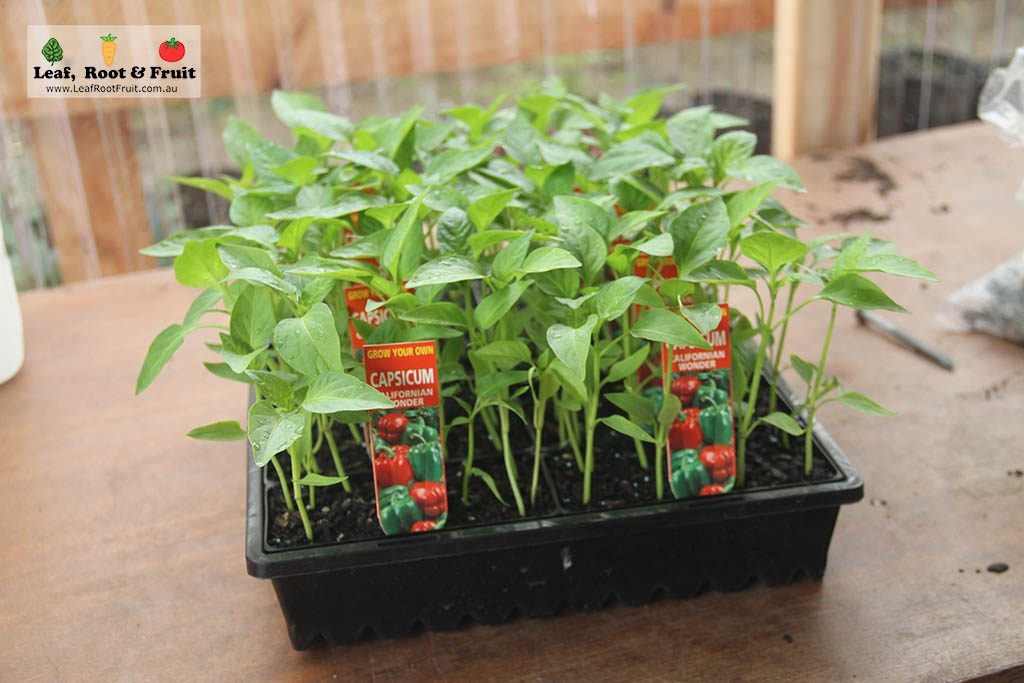
The plants were placed into my greenhouse, in a staggered pattern to ensure that they all had relatively equal access to light and water. The trial was set up in mid-December 2018 and results collated late February 2019.
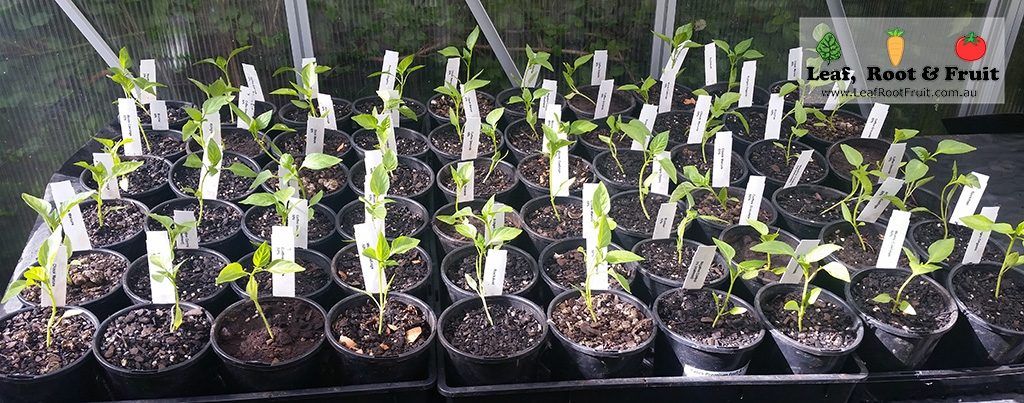
Products tested in my soil conditioner trial
The following products were tested in the trial
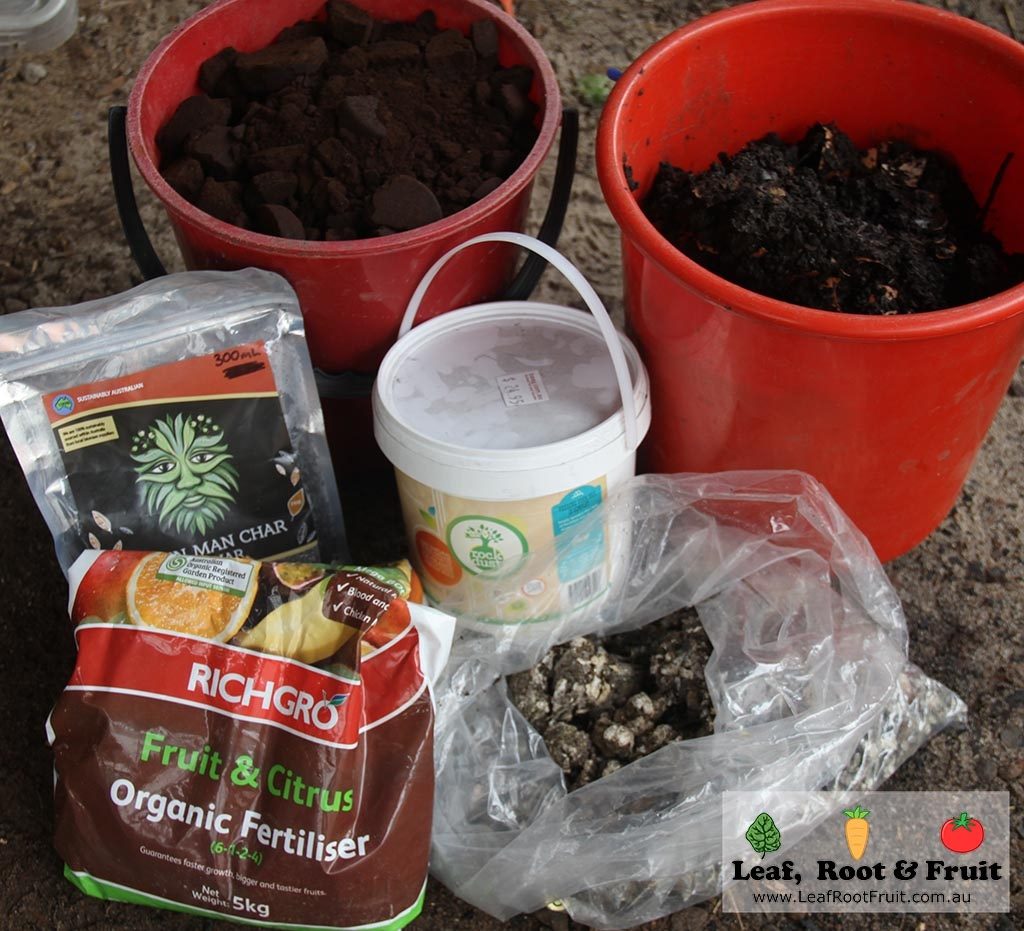
Negative control
The negative control plants were potted up in straight potting medium, with no additional treatment or fertilisers. All treatments were assessed against this control. Soil conditioners judged with a positive impact on growth, had plants that were bigger and/or grew more capsicums than this treatment.
Richgro Organic Fruit and Citrus Fertiliser
Richgro Organic Fruit and Citrus Fertiliser was the best organic fertiliser in my previous fertiliser trial. I included it to enable us to compare the effect of the less traditional treatments. To prepare this treatment I mixed four teaspoons through 6 litres of potting mix.
Cost: $13.37 for 5kg bag
Rockdust
According to their website: “Munash Rockdust is a natural mineral fertiliser, which replaces what has been removed from the soil. It recreates the natural process that occurs in the earth to restore soil to its proper level of health”. Basically it is rocks, crushed up into a powder. I used the directions on the pack and mixed 4 teaspoons through 6 litres of potting mix.
Cost: $24.95 for a 3kg bucket
Biochar
Green Man Biochar is charcoal made from biomass via pyrolysisis. Biochar is gaining popularity as a soil amendment and has the added bonus of sequestering carbon into the soil. This means less carbon ending up in the atmosphere contributing to global warming. I used the directions on the pack and mixed the whole 300mL pack through 6 litres of potting mix.
Cost: $11.50 (inc shipping) for 300mL bag
Worm castings
At home I use (and recommend) the Hungry Bin Worm Farm from Worm Lovers. In the last trial I tested the worm juice (worm wee) and found that it had no effect on the plants. So this time I’m trialling the worm castings. These were harvested from the bottom of the worm bin and mixed with potting mix at two different rates:
10% Mix = 1 Part Worm castings 9 Parts Potting Mix
50% Mix = Equal volumes of worm castings and potting mix
Cost: Nothing after the initial investment in the worm farm
Chicken manure
Chicken manure was harvested from my chicken coop, from underneath the chickens roosting at night sit. It was dried, but fairly fresh. This was mixed with potting mix at two different rates
10% Mix = 1 Chicken Manure 9 Parts Potting Mix
50% Mix = Equal volumes of chicken manure and potting mix
Cost: Nothing
Coffee grounds
Coffee grounds are high in nitrogen. I commonly see recommendations on social media that it be added to vegetable patches and gardens to improve soil health. This also offers an opportunity to divert waste from landfill. However, for some time now I’ve had a sneaking suspicion that coffee grounds actually have a negative impact on growth. The coffee grounds were mixed with potting mix at two different rates
10% Mix = 1 part Coffee Grounds 9 Parts Potting Mix
50% Mix = Equal volumes of coffee grounds and potting mix
Cost: Nothing
The results of my soil conditioner trial
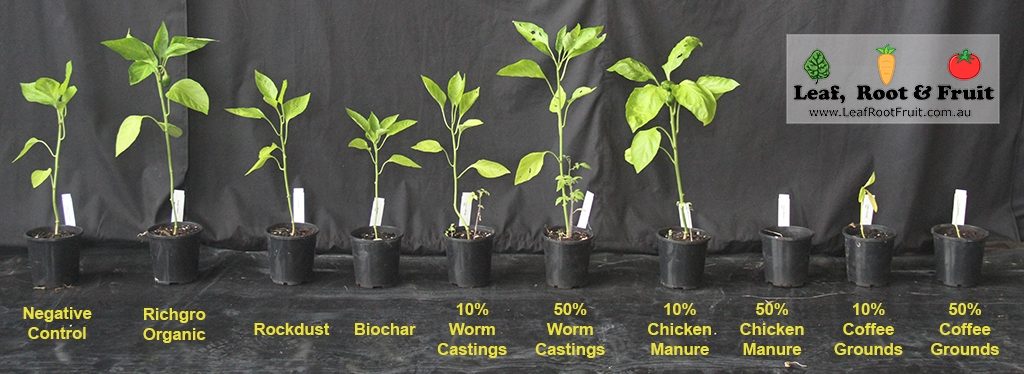
The plants were assessed for general health, number of fruit produced, leaf colour and pest attack. Results are tabulated below
| Soil Treatment | # Capsicums set (total for all 6 plants) | # Flowers (total for all 6 plants) | Leaf Colour | Leaf Damage due to Pests | Plant size relative to -VE Control | Comments | Overall Effect of Product on Growth |
|---|---|---|---|---|---|---|---|
| Negative Control | 0 | 0 | Light Green | None | N/A | 0 | |
| Richgro Organic | 5 | 0 | Light & Dark Green | Yes - Lots | Larger | +++ | |
| Rockdust | 0 | 0 | Very Light Green | No | Slightly Smaller | 0/- | |
| Biochar | 0 | 0 | Very Light Green | No | Smaller | - | |
| 10% Worm Castings | 0 | 0 | Very Light Green | Yes - Little | Slightly Bigger | Lots of extra volunteer plants eg tomatoes | + |
| 50% Worm Castings | 2 | 0 | Light Green | Yes - Lots | Bigger | Lots of extra volunteer plants eg tomatoes and one pumpkin | ++ |
| 10% Chicken Manure | 6 | 0 | Light & Dark Green | Yes - Lots | Bigger | +++ | |
| 50% Chicken Manure | 1 | 6 | Very Dark Green | Yes - Lots | Mostly Dead or Smaller | Two plants survived. One is thriving with very dark leaves. One is quite small with very dark leaves. 4 Plants dead | - - |
| 10% Coffee Grounds | 0 | 0 | Yellow & Very Light Green | None | Tiny - Not much bigger than when planted | All 6 plants alive but struggling | - - |
| 50% Coffee Grounds | 0 | 0 | Yellow | None | Tiny - Not much bigger than when planted | Two plants dead. 4 x plants struggling (with only 3 leaves between them) | - - - |
As you can see from the image above the Richgro Organic Fruit and Citrus Fertiliser was again one of the best performers with large, healthy plants and five capsicums set on each of the plants. The 50% Worm castings had fantastic growth and two capsicums set. An added bonus of using the worm castings was the germination of many self-sown tomato plants and even a pumpkin plant.
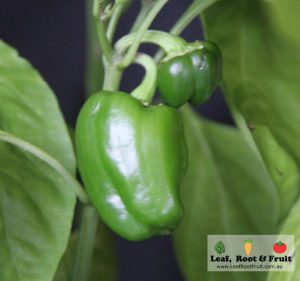
The best performer in the trial (by a narrow margin) was the 10% chicken manure with a total of six capsicums set on the plants.
Not surprisingly, the 50% chicken manure treatment had a negative impact on most of the seedlings. This was likely due to the high nitrogen content burning the roots of the freshly transplanted seedlings. Interestingly, one of the small seedlings survived the initial transplant shock and is now thriving in the conditions. The leaves on this plant are the darkest and it generally looks the healthiest.
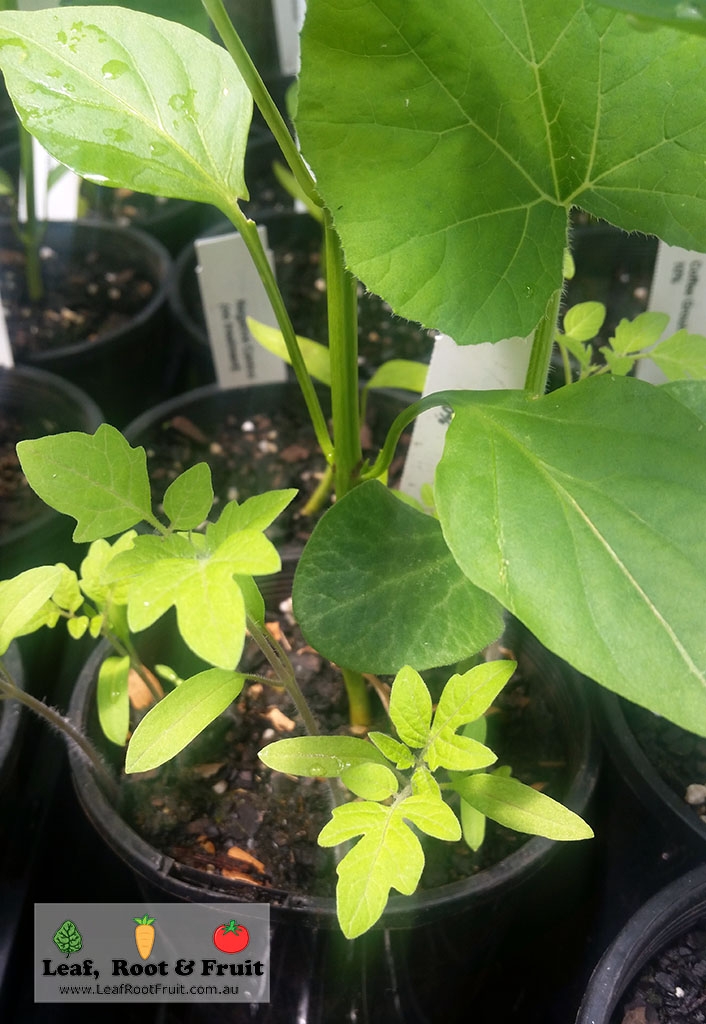
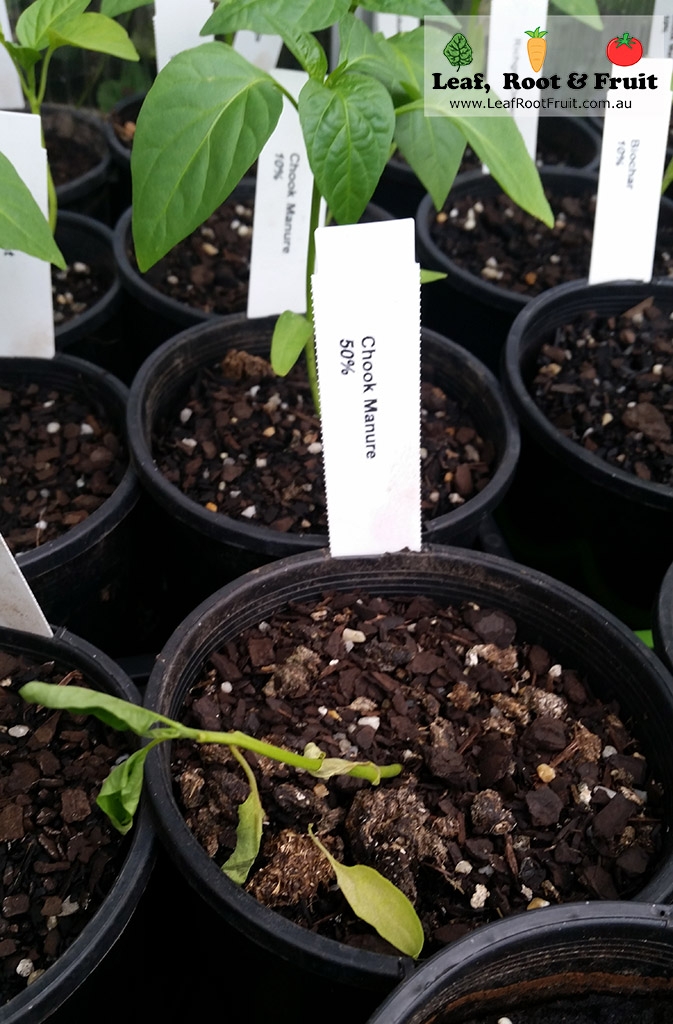
Coffee grounds could be used as a herbicide
Both coffee treatments had very negative impacts on plant growth. In fact, the plants are about the same size as when they were transplanted. This is likely due to caffeine having an allopathic effect. That is, the coffee plants produce caffeine, not to make us high, but so that they can secrete it into the soil to supress growth and competition from other plants. Two plants in the 50% coffee grounds treatment died.
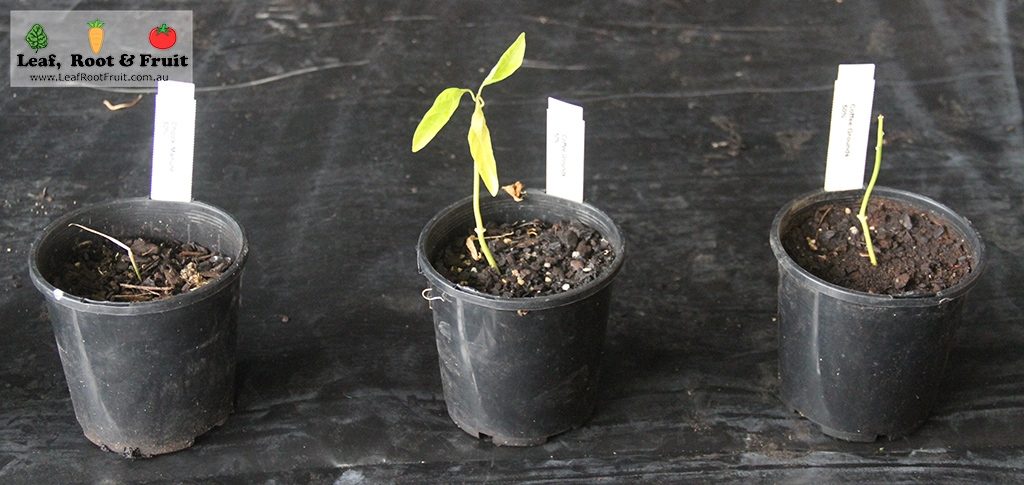
Impacts of the Soil Conditioners on Pest Attack Patterns
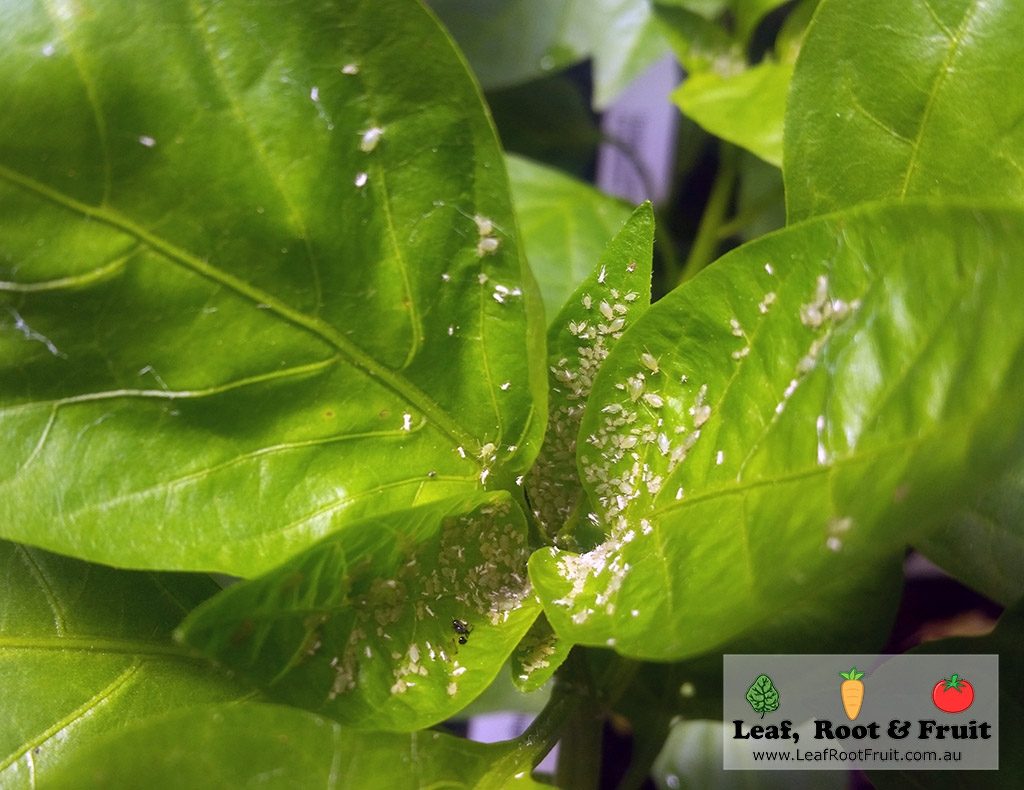
The greenhouse doors and vents are kept wide open to stop plants from cooking in the summer sun. This means that pest insects such as moths, aphids and whitefly can freely come and go (and so can their predators). In early January, I noticed an outbreak of aphids on the capsicum seedlings in the trial. However, most of these aphid infestations occurred on the strongest growing plants.
A fortnight after I had noticed the aphids, I noticed ladybug larvae had turned up in large numbers to clean up the “problem”. After this, the plants all bounced back and showed little signs of long-term damage.
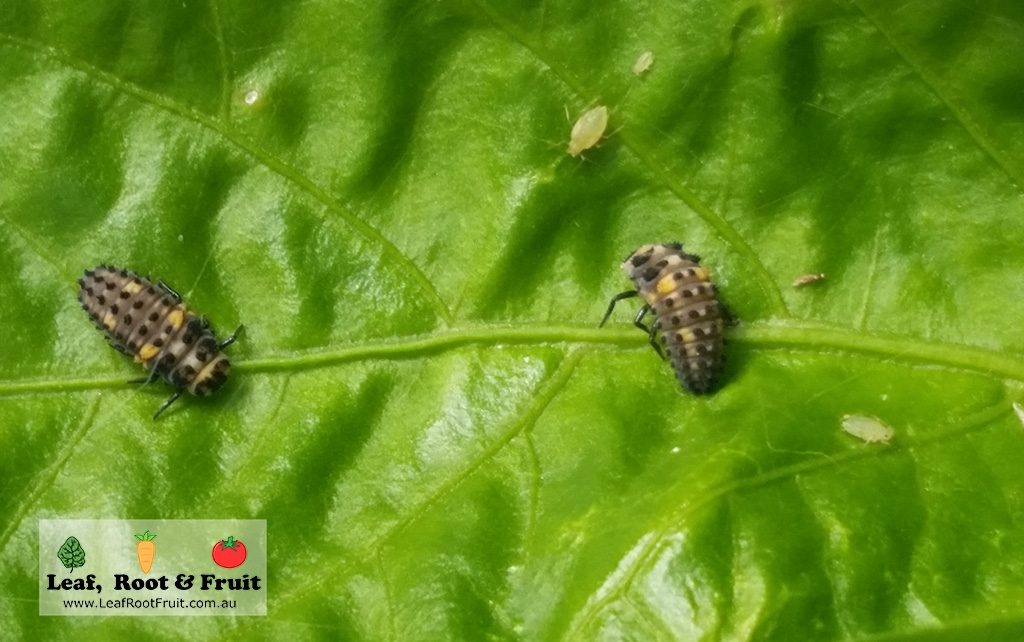
Towards the end of January, I noticed that something had started chewing holes in the leaves of some of the plants. These were likely little slugs (or possibly caterpillars).
However, I couldn’t easily locate them (perhaps they had already moved on before I noticed them). Again, there was a strong correlation between the strongest growing plants receiving the most leaf damage from pests. There’s two things worth considering from this insight:
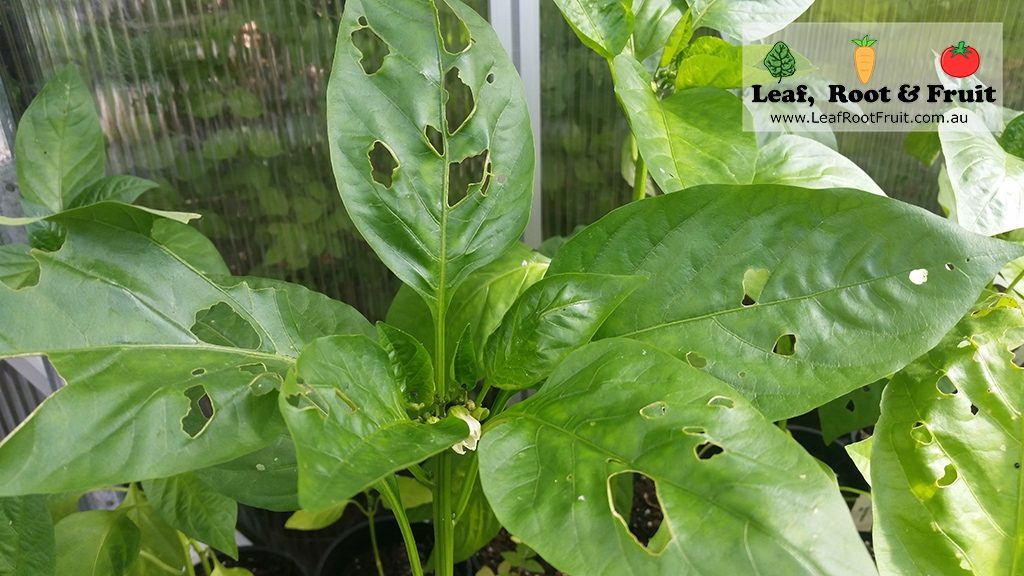
- Just because your plants are being attacked by a pest (or disease) it doesn’t necessarily mean they won’t be as productive as non-attacked plants. I found the most productive plants were the ones that were attacked.
- In my experience, truly healthy plants don’t get attacked by pests. Plants subjected to high levels of nitrogen often go through very fast periods of growth and seem to have a lot of pest issues. Nitrogen can be a bit like junk food for plants. It causes rapid growth, but doesn’t allow the plant time to fully incorporate other minerals such as calcium into cell walls. This leaves the plant tissue a bit weakened and prime fodder for pest bugs.
Interested in learning more about managing garden pests? This three part series is pretty comprehensive.
In summary, the best soil amendments in our trial were worm castings in heavy doses, chicken manure in light doses and Richgro Organic Fruit and Citrus Fertiliser.
I have contacted the manufacturers of the commercially available products included in this trial via email. I invite them to add their responses in the comments section below.
Please sign up to mynewsletter to be kept up to date on future results.
If you would like further information on soil conditioners, then please sign up to my Science of Edible Gardening Workshop Series. The August workshop (repeated annually) in the series focuses heavily on compost and soil conditioners.


Thank you for your test results.The results confirm my own limited plant / fertilizer tests.
Happy gardening. keep up the good work
Thanks for the great feed back Peter!
Good Luck and Happy Gardening.
Very interesting study! Thanks for sharing. I’d had similar concerns about coffee grounds – best in the compost heap I think.
Those holes in the leaves may be earwigs or slaters… (Bane of my life!)
Very interesting experiment, There is a lot of research on the coffee grounds all pointing to what you found, needs to be digested by worms along with other green waste to be average to good.
Bio Char: I read that this needs to be “Biologically Activated” before being much help other than carbon sequestration.
Agree with the worm castings and interested in the organic fertilizer results too, any ideas as to why bugs attacked the leaves of some and not others?
Hi Bob,
Thanks for your feedback. Yes, the supplier of the Biochar agrees with you, they indicate it should be activated or utilized in conjunction with a fertilizer.
As for the bugs, we notice they generally attack plants grown with lots of nitrogen. Plants fed with lots of nitrogen grow fast and don’t take up as many of the other important nutrients. The result is plant tissues that are weakened and more prone to attack. Nitrogen can be a bit like junk food for plants!
Good Luck & Happy Gardening!
Duncan
Hi Leaf, Root & Fruit,
Thanks for the including Green Man Char in your trials. The use of biochar is growing in popularity, however there is some common confusion about the mechanisms by which biochar supports plant growth and soil health.
Biochar is a soil conditioner comprising mostly carbon and is not a fertiliser unlike the castings, Richgro blends and chicken manure. Biochar works by improving soil structure (e.g. water and air permeability and retention), increasing soil pH and CEC (nutrient storage), and by increasing the specific surface area of soils, which promotes a variety of microhabitats for beneficial soil bugs and fungi. In this way, biochar works to condition soils and improve growth by promoting soil function rather than adding a quick supply of fertiliser for plants.
The directions on our biochar packaging indicate that biochar should be used at approximately 10% volume of the soil blend and in combination with a typical fertiliser, either liquid, compost, manure/castings, or rock fertiliser. In our experience, this has yielded the best results as it supplies nutrients directly to the plants whilst the biochar acts as a a type of battery in the soil, housing nutrients, water and gases, and beneficial soil bugs/fungi to promote plant growth and soil health more holistically over repeated growing seasons. In some cases, due to biochars affinity for adsorbing nutrients, incorporating biochar into soils without any nutrients may actually inhibit growth.
Green Man Char stipulate that biochar shouldn’t be used to substitute fertilisers but used in combination with fertilisers.
Please feel free to contact us if you have any questions and we look forward to hearing about any future trials.
Kind regards,
Green Man Char
Thanks for taking the time to respond to our blog post and clarifying how your product is intended to be used. We read on the instructions that it “may” be used in conjunction with a fertilizer, but not that it “should”. As such, we trialed your product on its own merits to see what would happen.
We’ll certainly look to trying activated biochar in future trials.
Thanks again for clarifying
Duncan
The potting medium on which you based the experiment is almost certainly largely organic (e.g. composted wood chips), maybe with some coarse sand, so it would be surprising to see any effect of simply adding more organic matter unless it contained releasable nutrients.
I have used large amounts of coffee grounds both for compost making and directly into the garden (silty clay), but NOT by mixing with soil just before planting. Although not a controlled experiment, I have got good growth/yields without other added fertilisers and with no pesticides used, and have not seen an inhibitory effect on seedling growth as yet. Undiluted coffee grounds placed on top of the soil and covered with mulch become alive with compost worms (the red ones) quite quickly so they are in effect making worm castings out of the coffee, which at the end of the growing season become part of the soil after digging in.
Charcoal without added nutrients is not a fertiliser and can absorb nutrients temporarily and thus reduce their availability to the growing plant. It is for long term soil improvement or can be “charged” with nutrient before use by composting with fresh organic matter, manures, urine etc.
Would it be possible for you to run trials with actual soils which can benefit from soil improvers? For example, heavy clay and sandy soils can benefit from all kinds of organic matter such as composts, manures, and long lasting carbon such as charcoal and humus. Such trials would need to have at least two types of control: 1. Unmodified soil, 2. soils with a standard small amount of slow release fertiliser such as osmocote (even though not organic, it would remote the nutrient limitation on plant growth to see if soil structure and biological activity in the soil was significantly beneficial). The hypothesis being tested is that the organic treatments would produce plants that are as large and fast growing as in the osmocote fertilised soil but stronger/more productive/more pest resistant.
I also use lignite (brown coal) as a soil improver but it is not readily available through garden suppliers (it should be). Like charcoal, it is not a fertiliser but can work with charcoal to increase the levels of long lasting organic matter (humus) in the soil, improving both its structure (porosity and crumb structure) and nutrient/water holding capacity.
Hi Stuart,
Thanks for your thoughts and feedback on our experiment. We also appreciate you providing insight into how you use coffee grounds in the garden.
Your proposed experiment sounds great and we would love to see the outcomes of it. Unfortunately, an experiment on that scale is well beyond our means, budget and space. Perhaps one day we will have scope to tackle big projects just as this, but for now we are limited to more simple experiments.
Good Luck & Happy Gardening
Duncan